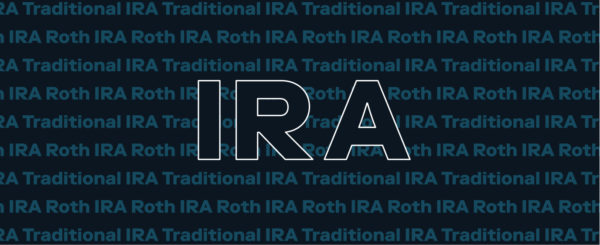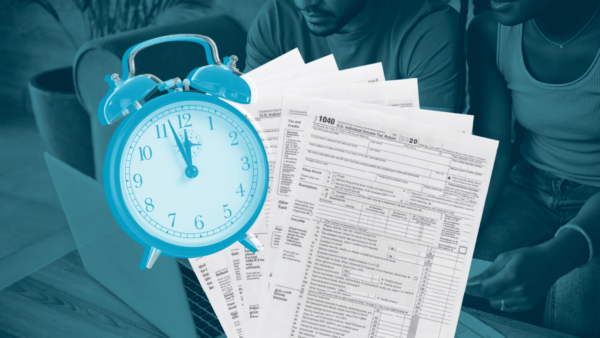Sep 6, 2023
What Is the Average Retirement Savings by Age?

Your retirement savings goal may sound simple: save enough money to retire comfortably when you no longer receive a regular paycheck. But determining exactly how much money you need for retirement, and how much you should have tucked away now to be on track, can be a bit more complicated.
Understanding the benchmarks of average savings at various stages of life is like having a compass guiding you through the complex landscape of retirement planning. It enables you to assess your own financial standing within the context of your age group.
Keep in mind that how you plan for your retirement will depend on many factors unique to your situation, so take averages with a grain of salt.
In this article, we’ll cover:
- The average retirement savings by age
- How much you need to retire
- Retirement accounts
- Tips for saving for retirement
What is the average retirement savings by age?
Based on data from the 2019 Survey of Consumer Finances by the Federal Reserve System (the Fed), here’s the average amount people have in retirement savings based on age group.
| Age range | Average retirement savings |
|---|---|
| Under 35 | $30,170 |
| 35 - 44 | $131,950 |
| 45 - 54 | $254,720 |
| 55 - 64 | $408,420 |
| 65 - 74 | $426,070 |
For added context, about 28% of non-retired adults do not have any retirement savings, according to the Fed’s 2023 Economic Well-Being of U.S. Households Report.
How much money do you need to retire?
The average retirement savings by age may give you a benchmark for comparing your savings to other people’s, but those figures don’t necessarily reflect the recommended retirement savings by age. You’ll need to do some calculations to figure out how much money you need to retire comfortably based on your current income and the age at which you plan to retire.
Experts suggest that people need about 80% of their annual pre-retirement income to maintain their living standard after retirement. For example, if your gross income is $100,000 a year, you’ll need at least $80,000 annually to maintain that lifestyle after you retire.
You can then apply the popular 4% rule, which assumes you’ll live for 30 years after retirement and make an average 5% return on investments. The 4% rule states that you’ll want to withdraw 4% of your retirement savings annually. So, for an $80,000 annual withdrawal in retirement, you’d need savings of around $2 million when you retire ($80,000 / 0.04).
Of course, the amount of money you need to retire depends heavily on factors unique to your life, such as the age at which you retire, your tax bracket, and your assets and debts. The annual income you’ll need in retirement is also affected by lifestyle factors like where you live, healthcare expenses, and whether you downsize to reduce your expenses.
Remember that the money in your retirement account may not be the only source of income after you leave the workforce. You may receive social security benefits, have a pension, or earn passive income through things like rental properties.
Finally, you may also want to think of your retirement savings goals in terms of your entire household’s needs. If you live with a spouse, partner, or partners, consider the combined income and savings of all the earners in your household, as well as any differences in how far each person is from retiring, when calculating your savings goals.
How much of your income should you save for retirement?
Many advisors recommend you save 10-15% of your gross income for retirement starting in your 20s. If you start investing later in life or want to retire early, it may make sense to up your investments to 20% or more of your income if possible.
Realistically, not everyone can afford to put aside that much of their paycheck. Saving as much as you can now, and increasing that amount as you’re able, can still help you work toward your goals. What matters most is that you start saving what you can as early as you can. Because retirement investing takes place over such a long period of time, your savings will be heavily impacted by compounding. The earlier you invest, the more you can earn on that money over time.
Retirement account types
Keeping your retirement savings in a tax-advantaged retirement account can help your money grow over time. According to a 2022 report from the Fed, among those with retirement savings, 54% of non-retired adults had money in an employer-sponsored plan such as a 401(k) or 403(b), and 34% reported having money in an individual retirement account (IRA).
Roth vs. traditional IRA retirement accounts
An IRA is a tax-advantaged retirement account. There are two primary types of IRAs, a Roth IRA and a traditional IRA, each with unique features and benefits.
| Roth IRA | Traditional IRA | |
|---|---|---|
| Income limits (as of 2023) | Under $228,000 (joint filers) or $153,000 (single filers) | No limitations |
| Contribution limits (as of 2023) | $6,500 per year among all IRAs ($7,500 for people 50 and older) | $6,500 per year among all IRAs ($7,500 for people 50 and older) |
| Taxes on contributions | Taxed before contributing | Taxed at withdrawal |
| Taxes on withdrawals | None for qualified withdrawals | Taxed as income at withdrawal |
| Tax deductions | None | Contributions are deductible for the contribution year |
| Qualified withdrawals | May begin at age 59½; subject to 5-year rule | May begin at age 59½ |
| Tip: You can have both a Roth and a traditional IRA, but you can only contribute up to the total annual contribution limit among all your IRA accounts. |

Take control of your tomorrow with an IRA.
Set aside money for retirement-and save on taxes-with a traditional or Roth IRA.

401(k) vs. IRA retirement accounts
Employer-sponsored retirement accounts, like a 401(k), offer distinct features compared to IRAs. Many employers offer a matching benefit in which they match the contributions you make to your 401(k) up to a certain percentage of your salary.
| 401(k) | IRA | |
|---|---|---|
| Account type | Employer-sponsored | Individually managed |
| Participation limits | Your employer has to offer a 401(k) plan | Anyone eligible based on age and income |
| Employer matching | Dependent on your employer, but it could be between 3-6% | None |
| Income requirements | None, but you must be employed | Traditional IRA: none Roth IRA: under $228,000 (joint filers) or $153,000 (single filers) |
| Contribution limits (as of 2023) | $22,500 | $6,500 ($7,500 for people 50 and older) |
| Investment options | Limited to a pre-selected list of potential investments | Generally allows a wide variety of securities |
| Qualified withdrawal age | 59½ | 59½ |
| Tip: You’re allowed to contribute to both a 401(k) and an IRA, and doing so does not affect the contribution limits for either account. Many investors have both types of retirement accounts and spread their investments among them to take advantage of the different benefits offered by each. |
401(k) rollovers
Because a 401(k) is employer-sponsored, you may lose some control of it when you leave your employer or risk not accounting for it in your retirement planning. Often, investors will initiate a 401(k) rollover when they leave a job, moving the money in the account into their new company’s 401(k) or rolling it into a traditional IRA. This has the benefit of giving you control over how you’re investing you money and consolidating your retirement accounts.
Tips for saving for retirement
A 2023 Gallup survey revealed that only 43% of non-retired adults expect a financially comfortable retirement, and 71% of non-retired adults are at least moderately worried about being able to fund their retirement. Not everyone knows how to start investing for their retirement or how much they should invest.
The good news is, you don’t have to create a comprehensive financial plan or have all the answers to start putting away money for your future. Try these tips to get the ball rolling toward your goals.
- Make regular contributions to your retirement accounts. Build retirement savings into your monthly budget and put aside a bit of money from every paycheck. The slow-and-steady approach can make it less daunting to hit your goal.
- Take advantage of employer matches. If your employer matches some of your 401(k) contributions, make sure you’re contributing at least as much as they match. Your employer’s contributions are like free money to bolster your retirement savings.
- Invest extra when you can. When you get a bonus or a surprise windfall, consider putting a chunk of that money into your retirement account to give yourself a boost toward reaching your goals.
- Increase your savings when you get a raise. To avoid lifestyle creep and bolster your investments, bump up your contribution percentage when you get a raise. For instance, if you get a 3% raise, consider increasing your retirement contributions by 1%.
- Automate your retirement investments. If you have an IRA, set up direct transfers so that your contributions are automatically taken out of your bank the same day you’re paid. That way you won’t be tempted to spend that money, and saving will feel more effortless.
- Take advantage of different investing options. Various types of retirement accounts have different advantages, so consider investing in both a 401(k) and an IRA if you have the option. You can also invest in stocks and other securities through a brokerage account; this avenue doesn’t confer tax advantages, but it can be an additional way to build long-term wealth.
- Revisit your retirement plans annually. Did you move to a cheaper part of town? Get a new job? Buy a new house? Change marital status? As you age, your debts and assets change, which could call for adjustments to your retirement plan.
Start working toward your retirement goals now
Are you ahead of the average retirement savings by age? Feeling behind? Whatever the case, it’s never too late or too early to start putting aside money for your golden years.

Investing made easy.
Start today with any dollar amount.

Related Articles

How to Start a Roth IRA: A 5-Step Guide for 2024

What Is a Traditional IRA?

How Much Do I Need to Retire: A Guide for Retirement Saving [2024]

Roth vs. Traditional IRA: Which Is Best for You in 2024?

How To Plan for Retirement

Why It Can Pay to File Your Taxes Early





